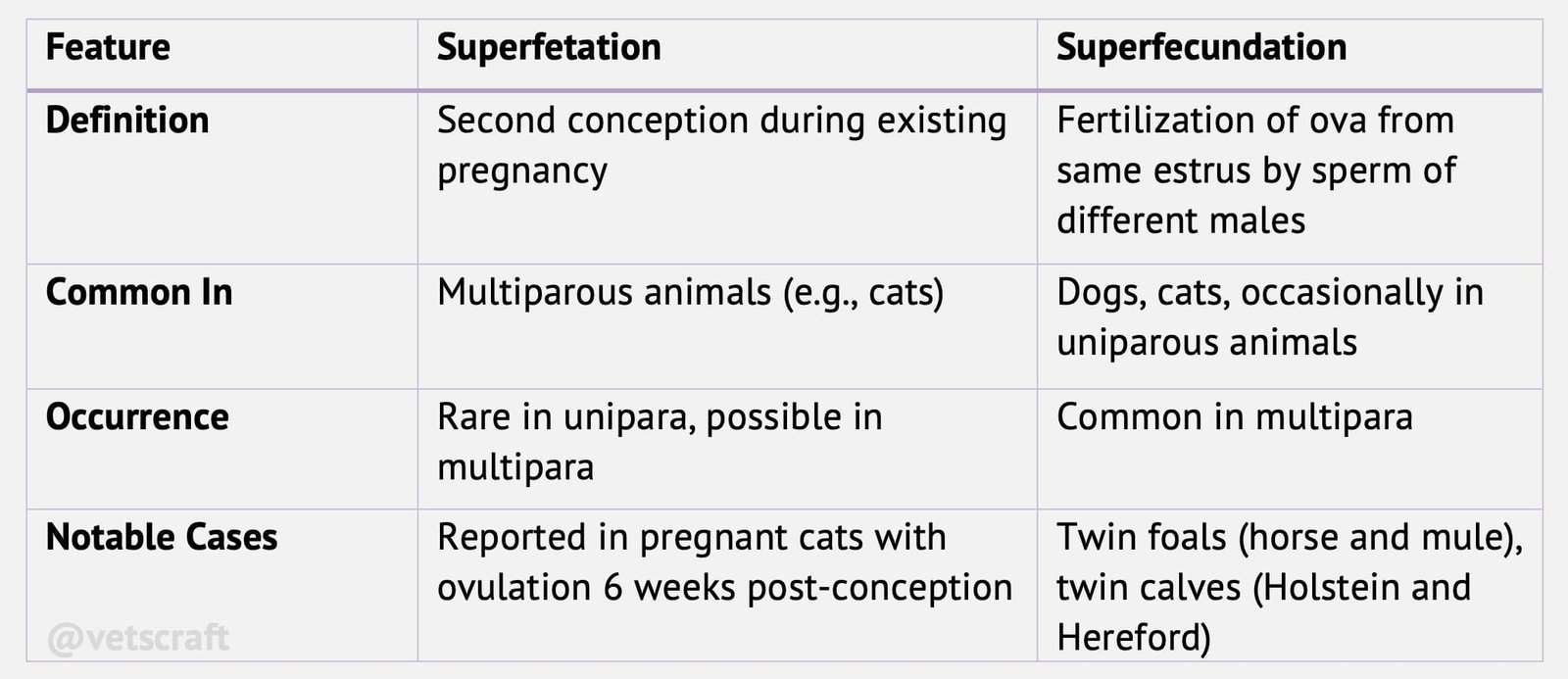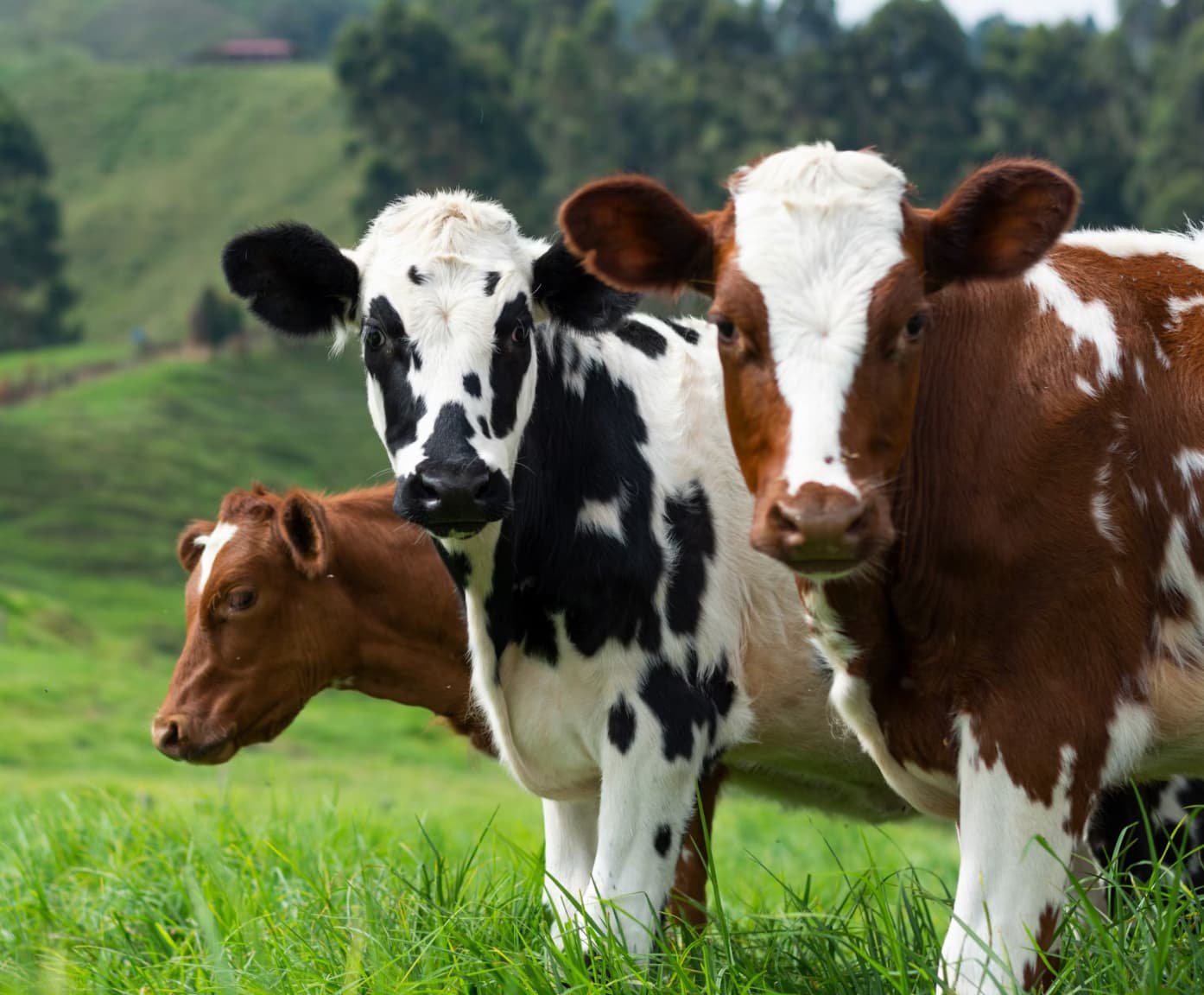TABLE OF CONTENTS
Superfetation and Superfecundation
Superfetation and superfecundation are reproductive phenomena seen in various animals.

Superfetation
Superfetation is a condition that occurs when a pregnant female carrying one or more live fetuses, comes into estrus, ovulates, is bred again and conception occurs.
Superfoetation is theoretically not possible in cows. Even though there are chances that cows may be bred during gestational heat, there are no evidences that ovulations occur during pregnancy.
However, in mares ovulations do occur in pregnancy, and hence, in this species superfoetation is theoretically possible.
In both the species even if ovulation did occur, the spermatozoa would not be able to pass through a cervix that is closed by a cervical seal and enter the oviduct through the pregnant uterus; even if the ovum did get fertilized and reached the uterus, the, endometrial area of both the uterine horns would already be occupied by the first embryo or fetus. If by chance, the second zygote does develop in the horn opposite to the one containing the embryo, when the earlier fetus was expelled, the latter would also be expelled at the same time. Hence, the possibility of superfetation in uniparous animals is highly questionable.
In multiparous animals with a poorly defined cervix and cervical seal, superfetation is more likely to occur.
There have been reports of pregnant cats developing mature follicles and ovulating as late as six weeks after conception. All the fetuses of one service might develop in one horn and subsequently an estrum may occur with ova fertilized from the second service. Parturitions could occur at different times from each horn.
Although superfetation is almost possible in multipara and rare in unipara, it appears highly improbable in most reported instances where the reports on superfetation are obviously incorrectly diagnosed.
Superfecundation
Superfecundation occurs when a female ovulates two or more ova during one estrus and copulates with two or more males during the same estrus with the resultant that the ova gets fertilized with spermatozoa from each male.
One may suspect the condition based on the breeding history. Following parturition the condition becomes obvious with offspring resembling each sire.
Superfecundation occurs more commonly in dogs and cats, because these species have long heat periods, multiple ovulations and opportunities of being served by different males.
Condition has also been reported in unipara where there has been birth of twin horse and mule foals and twin Holstein and Hereford calves.

